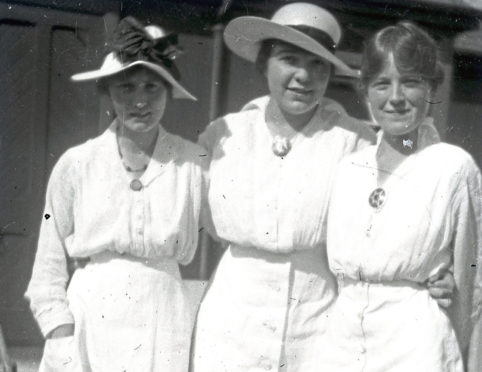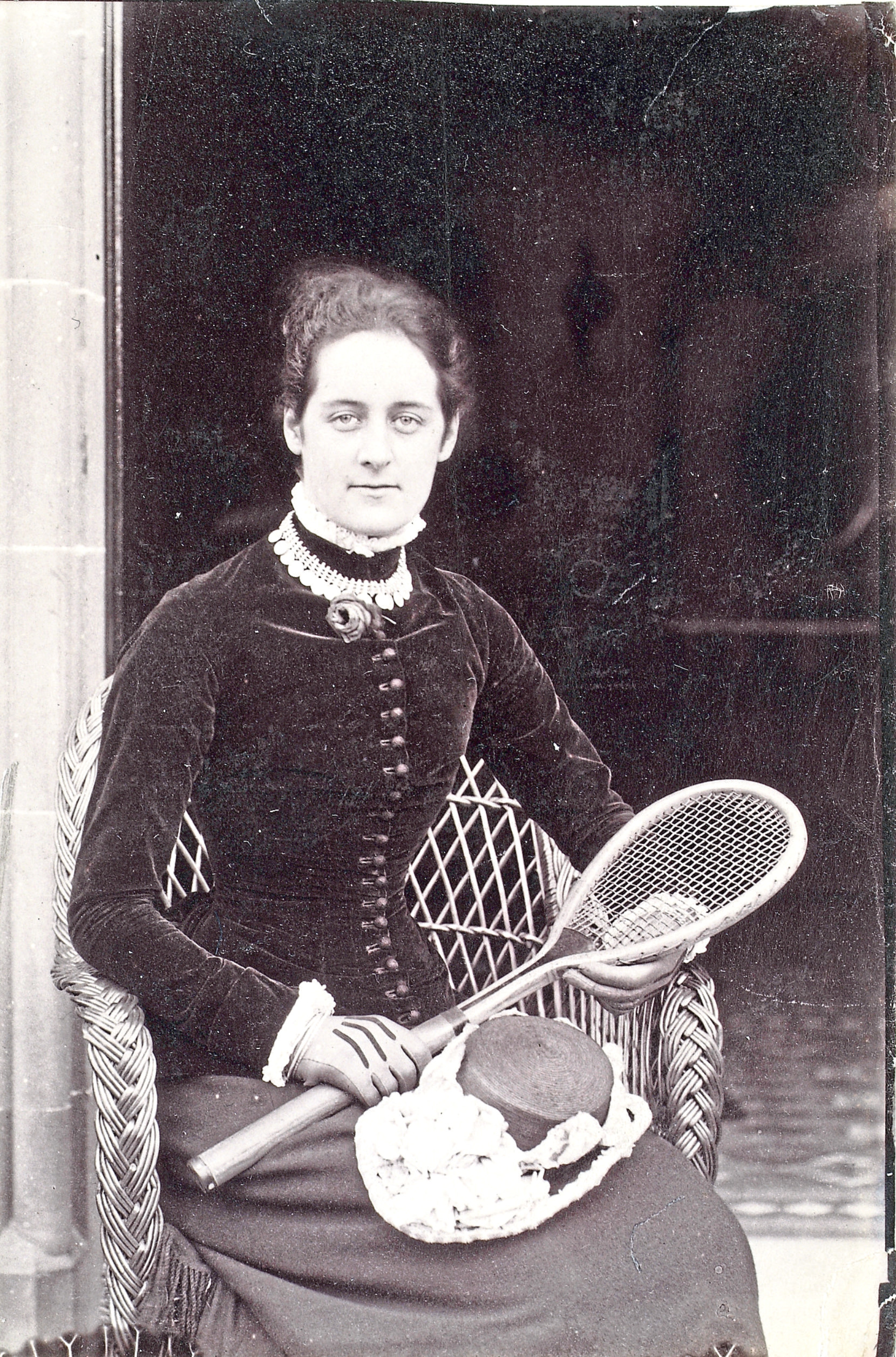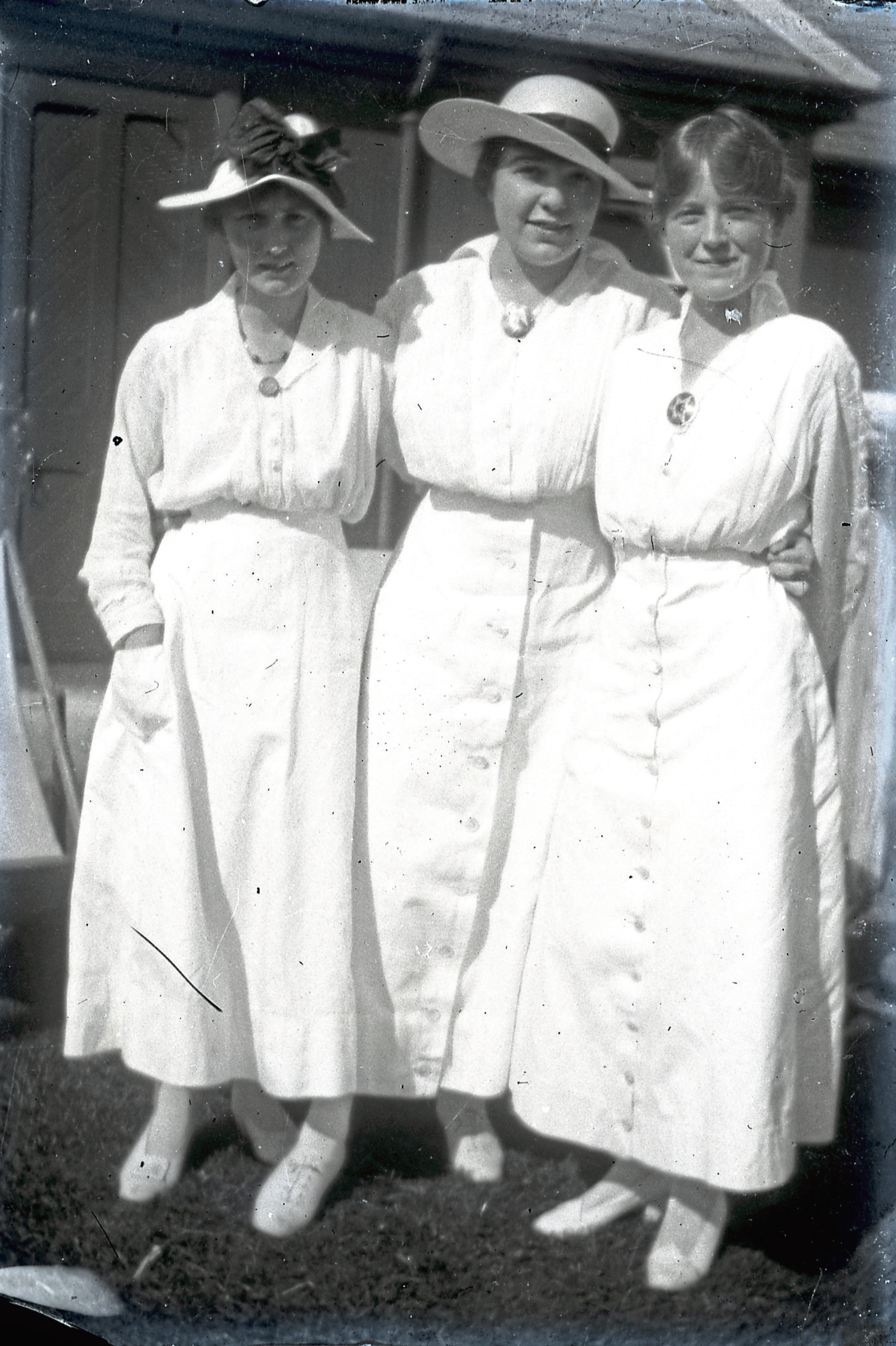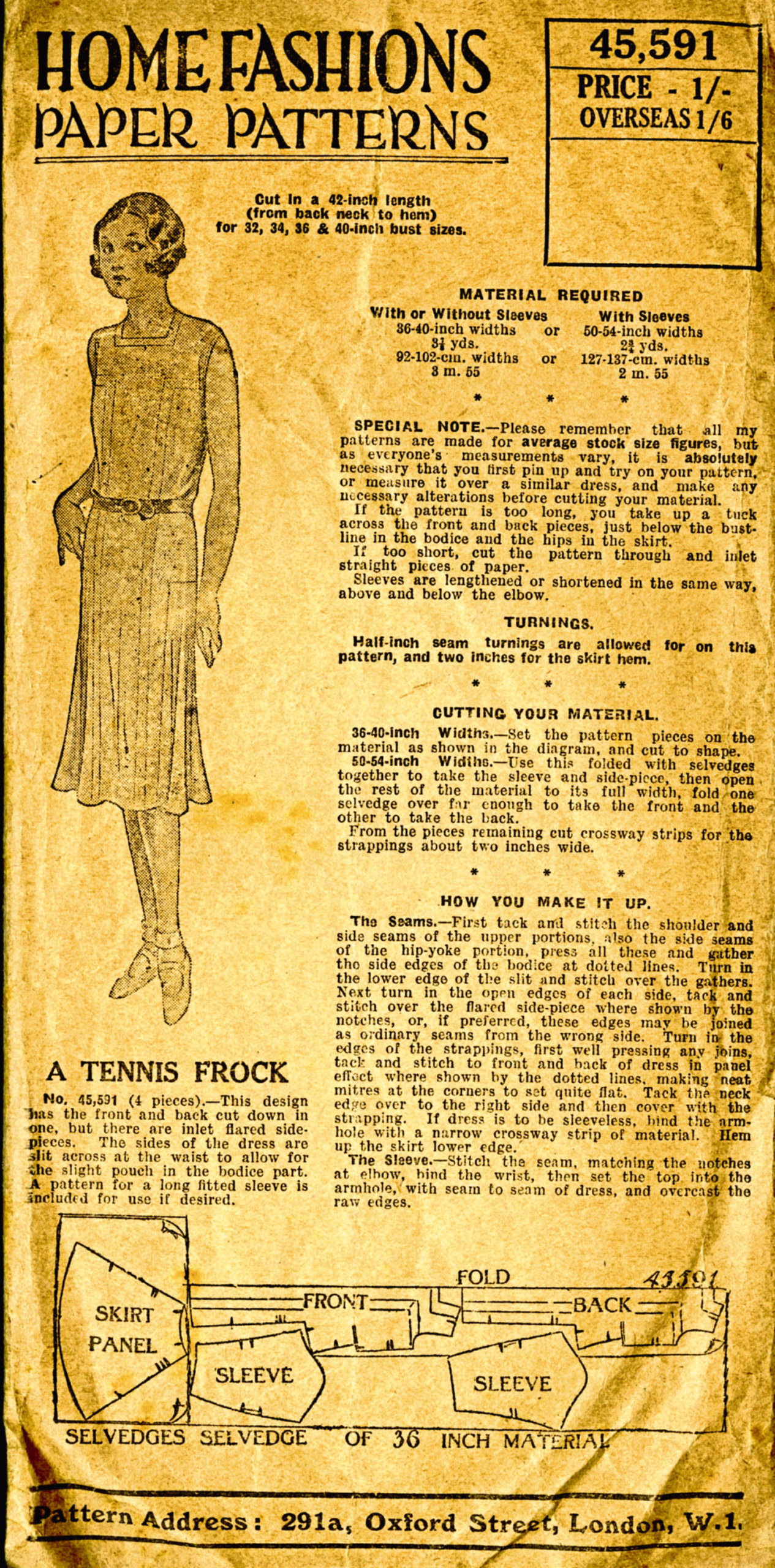A peek at the sportswear collection reveals changing silhouettes and fashions in tennis.
In the week that the US Tennis Open gets under way, a look through our collection reminds us how much tennis outfits, especially those worn by women, have changed over the years.
Mary Millais with tennis racket, 1890s
Our earliest records, including this image of Mary Millais, show that women played a set wearing what looks, to the modern eye, like very cumbersome dress. Mary was born in 1860, the fourth child of artist Sir John Everett Millias.
She is pictured resting after a tennis match at Torwood, in Perthshire. Her sportswear follows late Victorian fashion. She wears a restrictive corset, high collar, floor-grazing skirt, hat, heeled boots and long sleeves. Alexandra, who became the Queen consort of King Edward VII, wore chokers or high collars to hide a scar on her neck. Her love of high-collared tailor-made suits was adopted by other women who wished to emulate royal style.
Glass negative of three women at a tennis court, 1910
The three women at a tennis court in 1910 wear large brimmed hats, jewellery and heeled shoes. Movement around the court looks to be severely restricted with long, heavy, tight-waisted skirts and long-sleeved tops. The ankle-length skirt would have enabled the woman to move more freely than if they were wearing a more fashionable gown from this period.
Silk tennis dress, 1920s
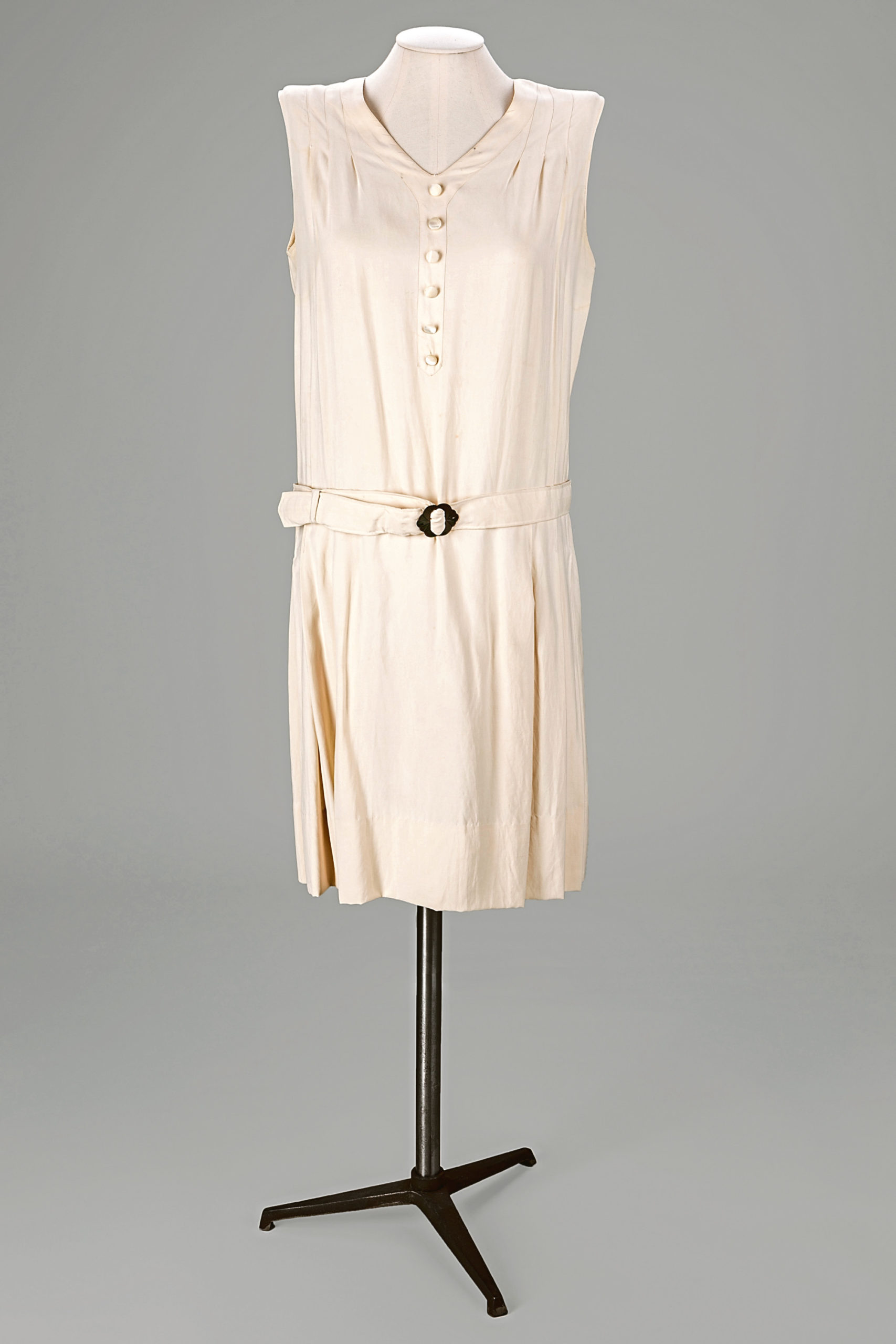
The knee-length silk tennis dress with belt follows the more casual fashions of the mid-1920s. Silk is light to wear and would have kept the wearer cool during summer matches. It’s likely to have been worn with a headwrap, white stockings, white canvas shoes and a cardigan.
Paper pattern for a tennis dress, 1930
By the 1930s, an increasing number of women participating in sports increased demand for fashionable women’s sportswear. Patterns for making tennis dresses became widely available in the mainstream fashion magazines of the day; physical exercise was even glamorised in them.
The white 1940s tennis dress was made and worn during rationing, restrictions and the uncertainty of war. Cloth and clothing were rationed under the British Government’s Utility Scheme. The dress meets the requirements of the scheme with limited decoration, including a false pocket, small lapels and only two buttons.
Cotton tennis dress, 1940s
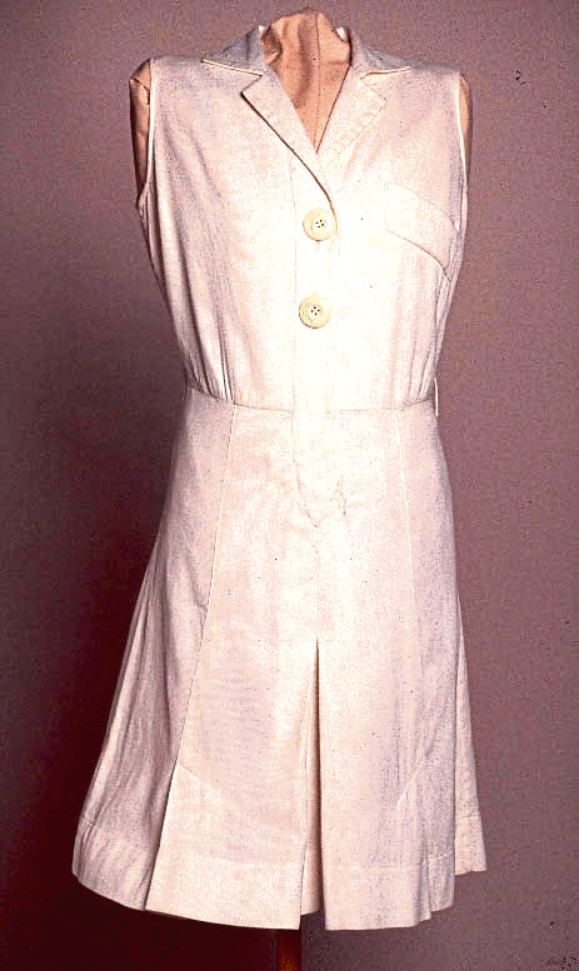
Women wore knee-length skirts to play tennis up until the Second World War. In the past modesty dictated women’s sportswear whereas players now wear clothes that assist performance and impact.
